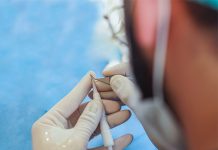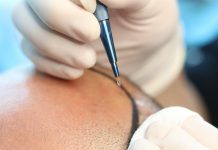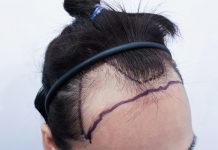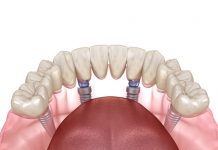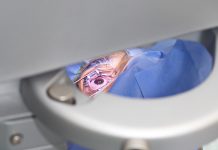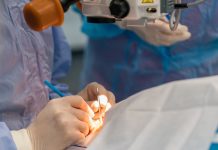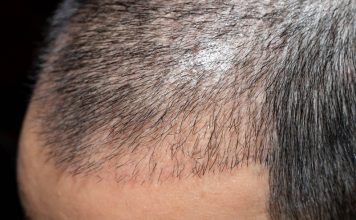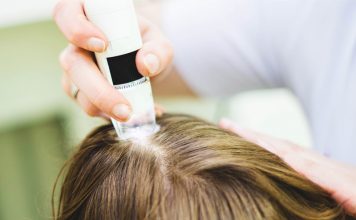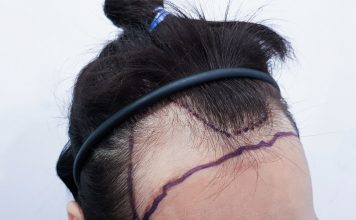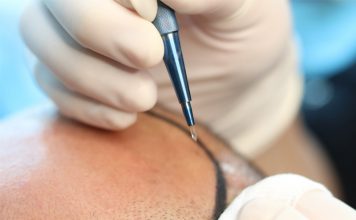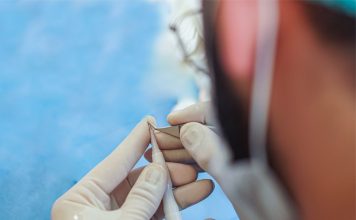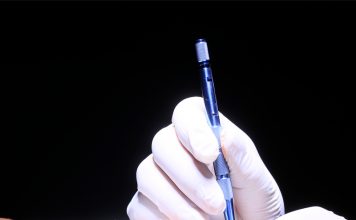Hair Transplant
Hair transplant in Turkey, its average cost, hair transplantation procedure types and everything you should know on hair restoration process are explained.
Hair transplant, also known as hair restoration procedure aims to increase the amount of hair in balding areas by simply moving your existing hair to these barren parts. A strong rivalry remains between companies, and even between countries, as to prove who provides the best hair transplantation procedure. As being one of the strongest competitors in this topic, Turkey is also making an assertive impression. Hair transplant in Turkey is an extremely common yet diligently-performed operation and it usually costs between £600 – £12,000. The exact cost might show variance depending on your loss, the type of the hair transplant procedure, combining of methods and the quality of your clinic and the items they use at that moment.
Hair loss can be a tremendously distressing and heart-breaking experience to go through. Irrespective of age, all people can observe that their hair is falling off in excessive or somewhat tiny amounts. It causes low self-esteem and confidence issues for people of all age groups. If you are losing your hair, there can be many causes to it. Thanks to elevated medical procedures, it is a problem that no longer has power on people’s mental health. It can most probably be treated with hair transplantation. In fact, the hair transplant surgery has been performed in United States since 1950’s. It has a kind of extensive history, and this means that it has gone through lots of changes regarding the techniques that have been used or the ones that are currently in use. Due to those changes in technique and practice, there are several options for going under the knife to have hair transplant surgery.
The results of hair transplant can most possibly be observed 6 months after the hair transplantation procedure. The full results are observable nearly after one or one and a half year. This means you had better wait to compare your before-and-after photographs in order not to lose hope and not to deal with any kind of negative emotions. During this long period, you may even think that your hair transplantation has gone wrong; but you just need to wait to see the final outcome. You are going to continue losing your hair even after the hair transplant procedure has taken place; the ones that have been transplanted are included, as well.
Your hair will eventually come back; it is going to grow stronger and thicker after this period passes. You will find yourself more comfortable with your appearance; hence sort of a mental satisfaction will cherish you as well as your physical, observable results. Your worries regarding that case are absolutely understandable; yet this procedure has rather a high success rate for being such a subject of competition among its providers.
The Cause of Hair Loss
Before deciding for having hair transplant surgery, the type and the main reason/reasons of your hair loss must be identified. Hair loss might stem from a lot of things. Identifying the cause can help treating the condition without applying for hair transplant surgery. By doing so, different types of treatments can be applied to stop or slow your hair loss.
If your hair is falling out gradually or abruptly, or it has become thinner than usual, you are probably experiencing or going to experience hair loss.
The cause of your hair loss might be stemming from these different factors:
- Genetic: The medical term for this type of hereditary hair loss is androgenic alopecia. It is hormone-related and can be observed in both men and women. This is the most common cause of hair loss and your genetics play the biggest role in this situation. In such a case, your inherited genes cause your hair follicles to get smaller till they completely stop growing hair. This genetic characteristic is inherited via the mother, hence the X chromosome. You can predict whether you are going to experience androgenic alopecia or not by taking a look at your mother’s or uncles’ hair. The story of hair loss in the family gives out great hints as to a possible hair loss that might take place in the future. Androgenic hair loss mostly takes place between the ages of 18-35. For males with this condition, having hair transplants after 35 can be a good idea. After they pass beyond 35 years in life, the hormones that cause hair loss in men stop being secreted. Therefore, the hair implantation becomes more successful due to the reduced hormones.
The loss pattern, however, shows difference for men and women. Men experience male pattern hair loss whereas for women it is called female pattern hair loss. The reason such a difference emerges is that hair loss usually manifests itself in different patterns for both sexes. Males usually lose hair starting from temples till hair remains only on the sides of their head; hence they nearly lose ¾ of their hair, as a result, forming gulf areas.
For women, though, hair loss generally manifests itself by losing hair from the hairline which is a line located in the centre of their head. That is called “the crown area”. Therefore, the biggest sign that women can look for is a widening part. It is generally accompanied by overall thinning of hair. In men, though, hair loss usually starts with a receding hair line or a balding spot at the top of their head. With the most suitable treatment, hair loss can be avoided or slowed down. You can even regrow your lost hair. The time you started your treatment plan matters greatly: the earlier you started, the better the results. If you choose not to apply for a treatment, then you will continue losing hair gradually.
- Aging: As you get older, you may notice that you have less hair than your younger self. This is due to the fact that your hair growth slows as the years pass. After a while, your hair follicles may completely cease to grow hair, thus causing your hair to get thinner. You may also notice changes in your hair’s colour; it will become lighter in shade and eventually it will gain a whiter complexion. If you notice this early, treatments might help you to grow your hair back.
- Alopecia areata: This is a disease that emerges when your immune system attacks your own hair follicles, therefore causing hair loss. It might be observed on any spot on your body that has hair. It might be your scalp, inside of your nose, your ears, your legs and so forth. Some people even lose their eyelashes or eyebrows due to this disease. If your hair does not grow back, regrowth can be supported with the right choice of treatment.
- Being treated for cancer: If you are being treated with chemotherapy or having radiation treatment to your head or neck area, you will most probably lose all of your hair within a few weeks. Although wearing a cooling cap for chemotherapy sessions might help avoiding hair loss, it will eventually happen to some degree. Your hair will start to grow back within a few months of completing chemotherapy or radiation treatment. You can talk with a dermatologist for using medications that will make your hair come back more quickly.
- Stressful events like childbirth, illness and so forth: If you recently have given birth, recovered from a serious illness, had an operation or gone through a stressful event such as a divorce or death of your loved ones, you might notice that your hair is coming off more than usual. Once the stress and its effect on your mind and body stop, your body will adopt to this situation, therefore stopping the excessive shedding. Your hair will most likely reach its previous fullness and health within 6 or 9 months.
- Your hair care routine: If you dye your hair or if you apply any chemicals or heat to it on a regular basis, you are most certainly damaging your hair. If your hair follicles are damaged, no hair will ever grow from that follicle again. Having those damaged follicles in an excessive amount leads to permanent baldness in some parts of the head. For preventing or stopping this, you have to consider changing your hair care routine and being gentler with your hair.
- The hairstyle you mostly prefer: If pull it tightly back when you do your hair, it might eventually result in hair loss. Incessantly pulling your hair when you are styling it is not good for your skin. You should not feel like your head is being squeezed.
- Experiencing hormonal imbalances: This is usually due to polycystic ovary syndrome (PCOS) which causes cysts to emerge on a woman’s ovaries. It is indeed accompanied by other symptoms and hair loss is one of them. If you also have stopped using birth control pills, this might have caused your hormones to lose harmony. If you are experiencing hormonal imbalances, your hair is more prone to get thinner or to be lost. With the help of treatment, you can improve your condition in a positive way.
- Some medications: Some kinds of medications may cause you to experience hair loss. You can consult with your doctor to learn the possible side effects of the medications you are currently using. The medications you are using must be prescribed by your doctor. Otherwise, you may go through serious health complications if you stop using them all of a sudden.
- Scalp psoriasis: If you have psoriasis on your body, you will most likely develop it on your scalp too. This is also going to result in hair loss. Once the psoriasis on your scalp clears, your body is going grow your hair back; yet it may take some time. You should talk with a dermatologist in order to be fully informed about the situation.
- Sexually Transmitted Infections (STI): If such infections, like syphilis for instance, are left untreated, you may experience patchy hair loss on your head, eyebrows, beard and so forth. After your condition is treated, your hair will start coming back.
- Thyroid problems: If your thyroid glands are not functional enough, your hair might gradually get thinner. You can even notice that your hair is coming out in clumps whenever brushed.
- Vitamin and mineral deficiencies: If you do not get enough biotin, iron, protein or zinc, you can notice that you are experiencing hair loss. When you start to get enough of these nutrients, you will see regrowth in your hair.
- Being poisoned: If you are losing hair, you can even being slowly poisoned. Substances like arsenic, thallium, mercury or lithium might cause hair loss. Consuming large amounts of vitamin A or selenium might also result in a toxic effect on your body. Once you stop your poisonous exposure, your hair will come back to its lively shape.
Things to Consider Before You Decide on Hair Transplant
If your hair is thinning; if you have balding spots or a hairline, which is currently receding, you can consider having hair transplant. You should always consult to your doctor first in order to eliminate any internal yet medically-treatable conditions.
After those medical examinations, you can have hair transplant if you experience the following reasons below:
- Male or female pattern hair loss and baldness are taking a toll on you.
- The reason you lose hair is not due to a medication you use or simply stress.
- Your hair is permanently lost and it is not able to be treated without surgical procedures.
- Your remaining hair follicles in the donor area are meeting with the desired amount of grafts so they can be used for transplantation process.
- Your hair growth is adequate.
- You are not currently being treated for cancer with chemotherapy or radiation treatment.
- You do not have any burns or open wounds on your scalp. The skin under your hair is not damaged.
- You accept the fact that treatment may last between several months or several years.
Nevertheless, hair replacement might not be a good option for you if you have following conditions:
- You are a female with a very widespread hair loss pattern.
- You do not have enough donor hair parts on your head-skin from which the doctor takes grafts.
- Your body forms keloid scars after surgeries.
- You lost your hair because you have been being treated with chemotherapy.
After you fully perceive these points, you should choose a hair transplant surgeon for it. The surgeon you choose must be educated with excellent training and certification. He/she must be an experienced individual in his/her field regarding hair transplant and which type transplantation you will get. You should also be able to feel comfortable around your doctor because the way you communicate is going to matter a great deal. Your wishes and ideas need to be conveyed easily and with comfort.
You can conduct a research on the Internet about hair transplant and a good surgeon. If you decide on a certain doctor, you can check their official social media accounts or their website to gather information about their previous patients and their experiences. Once you choose your hair transplant surgeon for sure, you are expected to apply for a consultation appointment first. It will cost a certain amount of money since it is going to be an in-depth analysis regarding your wish. This price is sometimes deducted from the actual price of the hair transplant operation.
Initial Consultation Appointment for Hair Transplant
During the first appointment in your doctor’s office, your hair transplant surgeon will examine your scalp and hair to determine the best place for the donor area as well as the parts that should look fuller. This is a perfect time to have a Q&A session about hair transplant procedure and methods with your surgeon as to your expectations and worries. In addition to these, your surgeon will demand a full account of your medical history including information about the previous surgeries you’ve gone through, the past and present medical conditions and the substances that you are allergic to as well as the medications that are currently in use by you.
In accordance with your goals, your unique anatomy and your surgeon’s experience, you doctor will inform you on your options regarding the procedure. You will mostly talk about:
- Possible type of the hair transplant surgery that is most suitable for you.
- Possible results that you can expect.
- Your price range for such an operation.
- Possible risks and complications.
- Your options regarding anaesthesia and the location you’ll have the hair transplant surgery at.
- Pre-surgery preparation guiding.
- Post-operative outcomes and what you can expect.
- Before and after photographs of the hair transplant cases similar to yours.
In accordance with your needs, you can go through different hair transplant procedures. Those hair restoration procedures can be listed as below:
- FUT Hair Transplant.
- FUE Hair Transplant.
- DHI Hair Transplant.
- Sapphire FUE Hair Transplant.
- Unshaven Hair Transplant.
- Female Hair Transplant.
- Afro Hair Transplant.
- Beard Transplant.
- Moustache Transplant.
Each of these hair transplant methods has different techniques of application. These various methods are determined depending on the needs of the patients. However, if there is one thing that is common, this thing is the fact that your hair follicles are going to be moved from one part of your body and they are going to be grafted, or transferred, to the area which is identified as problematic. However, the harvesting method can change, and that creates the difference between those procedures. This part of your head where your surgeon provides the grafts is called the donor area whereas the latter is named as the recipient area for hair transplant procedure.
The donor area is located at the lower back of your head. It might also extend to the back of your ears. Human body is adapted to protect the backwards parts of the body. The donor area is resistant to the hair loss hormone. That is why the grafts taken from there are so strong and never fall off. There is no such possibility of falling off for quality grafts.
In order not to injure the donor area, some parts of the scalp need to be shaved off.
Grafts are taken out from the dermis tissue, so they come off with the fatty tissue around. The fattier the tissue, the stronger are the follicles; this results in the fact that they hold onto the scalp better. The places where the grafts have been taken do not grow any hair in the future, that’s due to the fact that the follicles are completely gone. Yet, they are taken out in such a way that people cannot understand that the donor area have been exposed to harvesting.
From this aspect, hair transplantation is actually the transplantation of organs. And you cannot simply throw your organs in a trash bin. Sadly, though, some clinics do not abstain from throwing the remaining grafts. For this reason, you must be assured of the reliability of your clinic.
Questions to Ask Your Hair Transplant Surgeon
Taking an active part in your surgery carries the utmost importance. You are more than welcome to use this list of questions below:
- Am I a suitable candidate for hair transplant?
- Do I wish for reasonable and realistic results?
- Can you show me some before and after photos that I can look and take as a reference point?
- How will my scars look? On which part of my hair will I be able to observe them?
- How much does hair transplant cost and which hair transplant methods will you use or combine?
- What are the responsibilities that I must take on to get the best results out of this?
- How will my recovery period will be after hair transplantation? How long will it take until I return to my normal activities?
- What are the possible risks and complications for me?
- How will you handle complications if they ever occur?
- What if I won’t like the outcome of my hair transplant surgery?
Preparation For Hair Transplant Surgery
Your full medical history will be reviewed before the hair transplant surgery. You are going to discuss what you expect and what you wish to see as changed after the operation. It is very important that you openly discuss your expectations and be realistic about the possible outcomes.
Prior to your surgery, you will most likely be asked to:
- Stop smoking at least six weeks prior to hair transplant surgery for a faster and a healthier healing process. Smoking inhibits your cells from carrying enough oxygen to your organs and tissues; therefore it slows your healing phase down.
- Avoid using aspirin, some herbal medications or anti-inflammatory drugs that are able to increase bleeding by thinning the texture of your blood.
- Wash your hair with an antibacterial soap whenever you take shower.
- Be hydrated enough to go under the knife. Irrespective of the type of your hair transplant surgery, it is an extremely vital point for your safety during the operation and also your safe recovery.
Hair restoration surgery is generally conducted as outpatient. You might want to arrange for someone to drive you home and to look after you within the first twenty four hours following the hair transplant surgery.
The Day of the Hair Transplant Surgery
A typical hair transplant procedure can take two to eight hours depending on the patient, the surgeon and the type of the surgery that will be performed. Your hair transplant surgeon may inform you about the estimated time based on the details of your operative plan. Doctors usually prefer using local anaesthesia rather than complete sedation during hair transplant operation. You are going to be informed on how to prepare right before the operation and you will be provided with some instructions:
- Your doctor will need you to have the donor area trimmed or shaved in order to access and remove the hair grafts more easily.
- Your entire head needs to be cleaned and shampooed to prevent infections.
- You can be administered with oral or intravenous anaesthesia. It is for helping you to relax. Doctors usually prefer local anaesthesia, which is probably the most painful process of the entire procedure. However, you do not need to worry since it only takes 3-4 minutes for your scalp to get completely sedated. General anaesthesia, on the other hand, is usually preferred in plastic surgeries.
- Your scalp will be injected with a local anaesthetic substance. In addition to local anaesthetics, your clinic might also use painless anaesthesia device which sends high-pressure vibrations under your skin. This device is used as a pre-anaesthetic by surgeons.
- Your surgeon will choose the techniques that he/she will use based on the method you have decided. Your hair follicles will be removed and transplanted accordingly.
- After the procedure has taken place, your head will be cleaned and it will be covered with gauze. You might need to wear a pressure bandage to make you heal faster.
You will most likely be able to go home after a short while. Your doctor will need to observe you a little bit in order to decide on this.
During the Hair Transplant Surgery
The hair transplant surgery type depends on your condition. It creates changes in the techniques that your hair follicles are removed and transplanted.
Your doctor will start by cleaning your scalp thoroughly. He/she will then use a small needle to numb a certain part of your head.
The first step is called “Harvesting”. Your doctor takes the grafts from the donor area and puts them in a solution to keep them alive until they get to be implanted. The harvesting technique might change from procedure to procedure.
Your doctor opens the channels and it is vital for the growing directions of your new hair. Harvesting and opening channels usually takes a total of 1-2 hours.
After that, the implantation takes place. The whole process will take at least 6-7 hours. Your stitches will probably be removed in 10 days.
You might need to go under three or four sessions to attain the results you desire. There usually are several months between those sessions. It is due to the fact that your hair transplants should fully heal first.
Right After the Operation
The staff in your doctor’s office, most probably a caregiver, will inform you on your post-surgical care. He/she will give detailed information about your drains (if you have any on you), usual symptoms you will likely experience and signs of potential complications in order to detect them beforehand.
You are going to wear a dressing on your scalp for nearly two days after hair transplant operation. Your scalp will be extremely sensitive. In order for you to handle this, your doctor will prescribe pain killers. You probably will not need them after a week. You might also be prescribed antibiotics and anti-inflammatory drugs lest any kind of infection or extreme swelling should occur.
If you ever experience excessive or long-lasting aches or if you notice redness on the operated areas, you must contact your hair transplant surgeon to see whether these are normal.
Recovery and Aftercare
Following the post-operative instructions that your doctor gives bears a great deal of importance for your recovery. You will most likely be able go back to work after a day or two; however, some patients might want to extend this time frame. This, indeed, is depending on your work, your working environment and your job description. It is crucial to perceive that each individual goes through recovery differently after hair transplant.
The gauze and the bandages you wear will be taken off after two to five days following the hair transplant surgery. After the first week, you are expected to be able to wash your hair gently. In 10 to 14 days, your non-dissolvable stitches will be removed if you have any on you. You will also be asked to gently wash your hair with a special solution for 10 days.
On the day 11, the crusts on the scalp will need to be softened with a cream and then cleaned.
You will start seeing that your transplanted hair is falling off after a few weeks, which is completely normal. New hair will start to come back 6 months after this. And you will be able to observe your full results in one or one and a half year.
During recovery, you should stay as hydrated as possible. You should also avoid smoking at any cost to heal in a healthier way.
Possible Side Effects of Hair Transplant
- You may feel that your scalp is tight, painful or swollen for a few days.
- You may experience a temporary scabbing in the transplanted area.
- Bruising around the eyes.
- You might notice just one or more than one tiny scars.
- Formation of a crust where your hair was removed or transplanted.
- Numbness, lack of sensation on the skin of your head.
- Itchy sensations.
- Folliculitis (infection or inflammation in hair follicles).
- Sudden loss of transplanted hair.
- The unnatural appearance of hair locks (This is why you should choose a good hair transplant doctor and follow his/her advices).
These are the common effects of hair transplant surgery.
Risks and Complications
Hair transplant procedure is usually safe. Nonetheless, every surgical operation carries a small risk of:
- Infection.
- Bleeding.
- Allergic reactions to certain substances.
In addition to these, your hair transplant may not adapt to your hair as expected and it might fall, leaving a noticeable scar.
If any of these happen, your hair transplant surgeon must explain why it has happened and how they will handle it to make you get better.
The hair around the transplants might continue to get thinner. However, your hair is expected to look gradually natural as time passes. There is also the risk of hair not looking natural enough.
You should talk with your doctor in order to get further information about the risks and your realistic expectations. If hair transplant surgery is not a good option for you, your doctor can determine and prevent you from doing this.
What Are the Types of Hair Transplant?
Hair transplant can be conducted with different techniques in accordance with the main goal and expectations of the patient. These types and techniques can be listed as below; FUT, FUE and DHI hair transplants. FUT is the oldest one, choose FUE or DHI or combine them.
What Are the Pros and Cons That I Should Consider Before Having Hair Transplant Surgery?
You are going to look much more youthful and you are going to feel the confidence it provides for you. Your social anxiety regarding your hair will decrease and it will even completely disappear.
You will no longer feel the need to use a wig or to use hair pieces, which look for more unnatural. Your hair loss problem will be permanently solved.
As for the cons, you will mostly deal with the psychological aspects of hair transplant surgery. It may take months for your hair to grow in the desired area. You might have to go through several sessions for one or two years. Moreover, there is no guarantee as to indicate that your new hair will be as consistent as your previous hair in terms of growth rate.
If you wish to learn your unique advantages, or your disadvantages, you can always talk with your doctor.
Am I a Good Candidate for Hair Transplant Surgery?
If you exhibit a male or female hair loss pattern, which is mostly due to the genetics, you can go through hair transplant surgery. This is due to the fact that this genetic problem cannot be solved with any treatment except hair transplantation.
You also need to have the adequate amount of hair follicles to be used in the process. If you have lost all of them or most of them, the surgery will not possibly succeed.
In order to have this surgery, your hair loss must not be stemming from certain medications, stress or some medical treatments such as chemotherapy or radiation therapy.
If your overall health is also okay, then there are no obstacles between you and hair transplant surgery.
What Will My Scars Look Like After the Operation?
First thing first, your plastic surgeon will mark parts of your head from which the hair follicles will be removed. This is going to be a hidden part on your scalp, mostly surrounded by other hair. Therefore your scars will not be visible.
Nevertheless, each hair transplant technique leaves a different pattern of scars. Your doctor will give you detailed and personalised information on this topic.
Can I See the Possible Outcome?
You can demand to see the previous patients’ results. Your hair transplant doctor will show you cases that are similar to yours, so you are going to be able to imagine your own possible outcome. If your doctor has such software in his or her computer, he or she can even show you your generated results in advance.
How Much Does Hair Transplant Cost?
This usually depends on the type and the technique with which hair transplant method is performed. Price range might show variance between £600 – £12,000.
When Can I Return to My Normal, Daily Activities?
You can go back to work after two days following the hair transplant surgery. However, this also greatly depends on your work, your working place and your job description. If you work under heavy labour, this time frame might be expanded.
You are expected to be able to take a shower after a week.
How Long Will My Results Last For?
The results of hair transplant procedure last for a lifetime. Nonetheless, some patients might notice that they continue to lose their original or transplanted hair after the procedure. If this situation turns out to be long-lasting, the patient may feel the need to apply for a second surgery.
For the best, the most beautiful and the most healthy results, you must return to your surgeon’s office for follow-up evaluations at scheduled times. Never hesitate to contact your surgeon when you have questions or concerns.
Will Insurance Cover the Cost of Hair Transplant Surgery?
Hair restoration surgery is evaluated as an elective type of operation. Therefore, insurance is not going to cover the cost. Yet, your surgeon might come up with a financing plan to make it easier to pay and to make the operation more affordable for you.
Can My Hair Loss Be Treated Completely if I Have Hair Transplant Surgery?
No.
This is mostly dependant on the main reason of your hair loss. The root cause of your hair loss must be identified in the first hand. For instance, if you are losing your hair due to chemotherapy or hormonal imbalances, these aspects should be treated first to see their effects on hair growth. If you have nutrient deficiencies, this might also be the reason of your hair loss. Your full medical record must be evaluated.
However, if it is certain that your hair loss is stemming from genetic factors and there is nothing to do about it; then yes, hair transplant might make you meet your desired results.
Yet, it is also important to keep in mind that every surgery has a small risk of resulting in disappointment though this is rarely the case.



